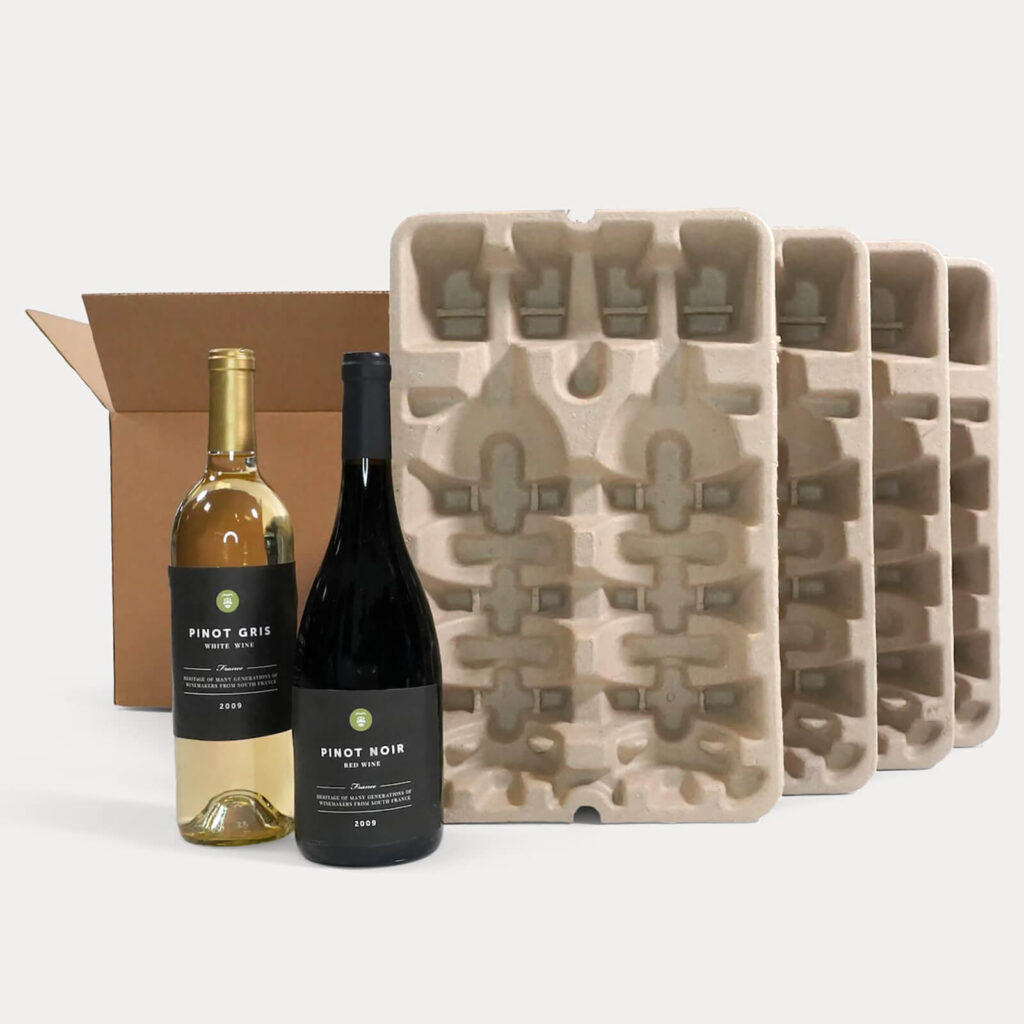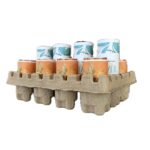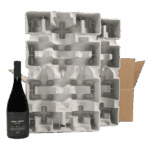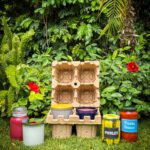Sustainable Winemaking Techniques
Traditional viticulture methods pose many environmental challenges. Standard practices like significant water consumption, reliance on chemical pesticides, and use of fossil fuels in farming equipment harm the ecosystem and threaten the well-being of future generations.
Transitioning to more sustainable winemaking methods not only addresses environmental concerns but can also lead to the production of higher-quality wines. In addition, adopting more green practices will help you appeal to eco-conscious consumers and boost your brand image.
In this blog, we delve into the world of sustainable viticulture and share strategies to reduce your carbon footprint and elevate the caliber of your products.
Incorporate Biodynamic Farming Methods
Biodynamic farming is a transformative approach that views vineyards as interconnected ecosystems rather than mere cultivation spaces. The guiding principle is the holistic management of various elements, including fields, animals, plants, and people.
Sustainable viticulture cultivates a conscious relationship between these components, fostering a symbiotic balance that supports the vitality of the entire vineyard. An integral aspect involves the observance of lunar and celestial cycles. The goal is to align agricultural activities with the subtle influences of cosmic rhythms to maximize influence on plant growth.
When addressing soil health management, implement cover crops and reduced tillage into your current methods. Doing so will ensure your sustainable winemaking efforts benefit the environment and yield superior grape quality. With natural composting, you can transform materials into a potent source of strength and fertility for native plants and trees.
Those efforts alone will attract beneficial wildlife and contribute to organic pest control. Ultimately, biodynamic farming preserves natural habitats while elevating grape quality. As a result, you can harvest wines that authentically embody the unique characteristics of the land.
Practice Organic Farming

People and the planet are the primary concern when implementing this practice. At its core, sustainable winemaking supports health, fairness, ecology, and care. These principles form the bedrock of organic farming. Follow the defined techniques, and cultivation will inevitably be environmentally friendly.
To implement organic viticulture, consider Integrated Pest Management (IPM) techniques to protect soil and human health. Traditional pesticides, herbicides, and fertilizers are harmful, so strive to avoid them. Utilize eco-friendly pest control methods to promote a healthier environment and sustainable viticulture.
That includes biological controls, cultural practices, physical barriers, and targeted pesticide applications only when necessary. Prioritizing soil health and microbial diversity in organic vineyards enhances vitality. Once your efforts yield positive results, apply for sustainability certifications.
National and regional certifications, such as USDA Organic, Sustainability in Practice (SIP), and NAPA Green, validate your brand and reputation. Environmentally conscious consumers are attracted to vineyards that foster a healthier ecosystem and produce wines with integrity and authenticity.
Harness Natural Yeasts for Fermentation
Natural yeasts directly correlate with the concept of terroir. Traditional methods seek to control the fermentation process with specific strains of yeast. However, sustainable winemaking embraces natural or spontaneous fermentation.
By allowing naturally occurring yeasts to do their thing without interference, winemakers can create wines that showcase the unique flavors and characteristics of the region. This approach aligns with pre-industrial winemaking philosophy and produces wine with added complexity and attributes.
To heighten the experience of the final product, allow the natural yeasts present in the grape harvest to orchestrate the transformation of sugars into alcohol. Beyond texture, the impact on flavor and aroma is profound. Yeasts introduce their inherent flavors, influencing the dominance of primary grape-derived tastes.
Wines fermented naturally often exhibit a creamy texture from the lees and have smoother profiles with a softened acidity. Fragrance nuances, shaped by grape type and fermentation process, further elevate wines, creating a sensory journey that harmonizes with sustainable viticulture and winemaking principles.
Switch to Renewable Energy Sources

Traditional energy sources contribute significantly to greenhouse gas emissions throughout the product life cycle, warranting a transition toward cleaner alternatives. To fully realize the objectives of sustainable viticulture, a shift to renewable energy sources must be a consideration. It ensures efficiency and environmental responsibility.
Top wineries on every continent recognize the environmental impact of their energy consumption and are now implementing practices to mitigate the effects of climate change. Solar and wind energy applications are intelligent transformative steps aligning with the growing trend toward renewable energy.
Beyond environmental benefits, this transition offers financial incentives, reducing operational costs over time. Additionally, adopting renewable energy enhances your brand image and helps you appeal to a growing market of environmentally conscious consumers, potentially boosting sales in an increasingly eco-aware global marketplace.
Eliminate Additives and Processing Aids
Maintaining wine integrity requires meticulous attention to additives and processing aids. While common practices assist with standard fermentation, corrective additives address specific issues. Examples include acetaldehyde to inhibit microbial growth, activated charcoal for improved color, and calcium carbonate, which reduces acidity.
While there are undeniable benefits, sustainable winemaking emphasizes minimal intervention. To attain objectives, reduce chemical use and explore natural alternatives. Bentonite, citric acid, malic acid, and pectic enzymes work well to maintain quality standards.
The departure from traditional norms boldly displays wine transparency and aligns with our protective ethos. For eco-conscious consumers, eliminating questionable additives is very appealing. Meet their demands, and you’ll position your company as the brand that aligns with their values.
Sustainable viticulture preserves authenticity and fosters a positive image that resonates with those seeking environmental stewardship in their wine choices. Embrace this practice to present a positive image and differentiate yourself in a competitive industry.
Implement Sustainable Irrigation Practices

Addressing the complex water challenges in viticulture requires understanding the direct impact on grapevine growth and vine health. Without proper irrigation techniques, vines will die, and the productivity of grapevines suffer. Start by testing for suspended solids, biological properties, and chemical characteristics of irrigation water to identify potential issues.
To make improvements, consider implementing efficient methods, such as drip irrigation. It provides precise water delivery and reduces wastewater and runoff while optimizing soil absorption. By delivering water directly to root zones, you can avoid excess moisture, foster disease-free environments, and ensure optimal vine growth and grape production.
Other sustainable winemaking practices include rainwater harvesting, recycling wastewater, and employing no-till approaches. As part of your daily routine, measure and control water usage from vineyard irrigation and clean winery equipment. This holistic approach allows you to consistently manage the water footprint while maintaining healthy soils and enhancing grape quality.
The delicate balance between vine hydration and environmental responsibility has the potential to set your brand apart from competitors. Moderate amounts of water stress increase harvest quality and produce premium wines. With sustainable viticulture, you demonstrate a commitment to environmental stewardship that resonates with new and existing customers.
Minimize Waste Water Through Treatment
To ensure sustainable winemaking and viticulture, effective wastewater management is essential. It should safeguard open water, soil, wildlife, and native plants, while also being cost-effective. The wastewater’s high acidity, low pH, and nitrogen-rich content, derived from plant stems and skins, can transform it into a potent fertilizer when properly concentrated.
It can be beneficial for irrigation but harmful if released into waterways, leading to oxygen-depleting blooms. In addition, fermentation aromas and sugars in wastewater attract wildlife and insects, making proper processing essential. Consider utilizing covers and nets if you have processing ponds to mitigate unwanted access. These will deter wildlife and human interference at the same time.
Ultimately, location will be the determining factor in which sustainable viticulture option is best for you. If you have access, hauling wastewater to treatment plants for disposal may be the most feasible. Typically, on-site solutions have more advanced equipment, like digesters for biogas production.
If it makes logistical sense, send waste to a specialist. However, if transport is not an option, consider energy-efficient technologies that produce minimal sludge, harness waste-to-energy opportunities, or provide reclaimed water for reuse.
Choose Sustainable Packaging and Transportation

Reducing your carbon footprint encompasses current practices and extends beyond the vineyard to transportation and packaging solutions. To effectively lower greenhouse gas emissions, accurately assess the amount of CO2 your processes release during normal operations.
When it comes to packaging, look for sustainable materials that can be recycled. Pulp and cardboard are excellent choices as they can be recycled over and over again and break down on their own within a year. Using environmentally friendly packaging not only helps lower emissions but also reduces waste accumulation in landfills.
From a logistical standpoint, consider greener transport options like low-emission vehicles to achieve sustainable winemaking objectives. Consolidate shipments and choose electric vehicles or biodiesel-powered trucks to adopt eco-friendly practices specifically geared toward transportation and distribution.
Shop Eco-Friendly Packaging at Gorilla Shipper
As we’ve learned, sustainable viticulture goes beyond the vineyard. It also involves how the wine reaches the consumer. From biodynamic farming to biodegradable packaging and low-carbon transport, each step you take toward sustainability not only preserves the environment but also enhances the quality of the wine you produce.
If you’re trying to go green, using environmentally friendly packaging is the easiest way to start. This is where Gorilla Shipper comes in! We offer sustainable wine shipping boxes and inserts that are 100% recyclable. All our packaging solutions are ISTA 6-FEDEX-A test certified, meeting the highest industry standards for safety.
Shop gorilla tough packaging solutions and take advantage of our bulk discounts. Have questions? Contact us now!




























